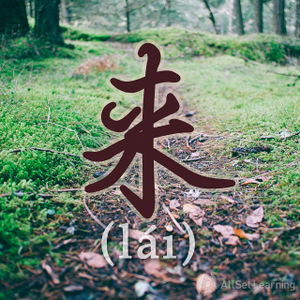Difference between revisions of "Advanced uses of direction complement "-qilai""
| Line 15: | Line 15: | ||
<div class="liju"> | <div class="liju"> | ||
| − | + | * 他 把 衣服 都<em>收 起来</em> 了。<span class="pinyin">Tā bǎ yīfu dōu <em>shōu qǐlái</em> le.</span><span class="trans">He put away his clothes.</span> | |
| + | *把 你的 工资 和 奖金 <em>加 起来</em>就知道你这个月的收入了。<span class="pinyin">Bǎ nǐ de gōngzī hé jiǎngjīn <em>jiā qǐlái</em> jiù zhīdao nǐ zhè ge yuè de shōurù le.</span><span class="trans">Add your salary and bonus together and you'll figure out your income.</span> | ||
* 请 把13 和 15 <strong>加</strong> <em> 起来</em>。<span class="trans">Please add 13 and 15 together.</span> | * 请 把13 和 15 <strong>加</strong> <em> 起来</em>。<span class="trans">Please add 13 and 15 together.</span> | ||
* 宝宝,你 应该 把 你 的 玩具 <strong>收</strong> <em> 起来</em> 。<span class="trans">Darling, you should put your toys away.</span> | * 宝宝,你 应该 把 你 的 玩具 <strong>收</strong> <em> 起来</em> 。<span class="trans">Darling, you should put your toys away.</span> | ||
| − | + | </div> | |
| + | |||
| + | ===Structure=== | ||
| + | |||
| + | 起来 can also be used to express more abstract concepts of bringing things together. | ||
| + | |||
| + | ===Examples=== | ||
| + | <div class="liju"> | ||
| + | * 一个 优秀 的 领袖 会 让 他 的 人民 <em>团结 起来</em>。<span class="pinyin">Yī gè yōuxiù de lǐngxiù huì ràng tā de rénmín <em>tuánjié qǐlái</em>.</span><span class="trans">An outstanding leader can make his people come together.</span> | ||
| + | * 怎么 才 能 让 她 <strong>高兴</strong> <em> 起来</em>。<span class="trans">Anything to make her happy.</span> | ||
</div> | </div> | ||
Revision as of 09:00, 24 March 2016
-
Level
-
Similar to
-
Used for
-
Keywords
We saw in B1 that 起来 (qǐlái), among other things, can be used to express a literal upward movement. 起来 also has some more slightly less intuitive usages, listed below.
Contents
Expressing bringing things together
Structure
起来 can be used to express collecting things together, where in English we might say "tidy up", or "add up".
Verb / Adj. + 起来
Examples
- 他 把 衣服 都收 起来 了。He put away his clothes.
- 把 你的 工资 和 奖金 加 起来就知道你这个月的收入了。Add your salary and bonus together and you'll figure out your income.
- 请 把13 和 15 加 起来。Please add 13 and 15 together.
- 宝宝,你 应该 把 你 的 玩具 收 起来 。Darling, you should put your toys away.
Structure
起来 can also be used to express more abstract concepts of bringing things together.
Examples
- 一个 优秀 的 领袖 会 让 他 的 人民 团结 起来。An outstanding leader can make his people come together.
- 怎么 才 能 让 她 高兴 起来。Anything to make her happy.
Expressing initiation of an action
Structure
起来 can also be used to show that an action or state has started and is ongoing:
Verb / Adj. + 起来 +了
Examples
- 大家 笑 起来 了。Everyone started laughing.
- 两 个 大妈 吵 起来 了。Two aunts started arguing.
- 今天 天气 热 起来 了。It's starting to get hot today.
- 他 的 病 好起来了。His illness is starting to get better.
When used like this, 起来 is only used with spontaneous actions, like 唱, 跳, 讨论, or with states like 热,冷,or 好 etc. It cannot be used with planned actions.
- 我们 做饭 起来 吧。
- 我们 开始 做饭 吧。
See also
- Result complement "-qilai"
- Figurative directional complements 下去 and 出来
- Direction complement
- Result complements "dao" and "jian"
- Appearance with "kanqilai"
Sources and further reading
Books
- Boya Chinese Elementary Starter 2 (博雅汉语初经起步篇) (pp. 80) →buy
- Chinese Grammar - Broken down into 100 items - Basic and Intermediate Levels (汉语语法百项讲练 - 初中级) (pp. 25-31) →buy
- Integrated Chinese: Level 1, Part 2 (3rd ed) (pp. 141-2) →buy
- Integrated Chinese: Level 2, Part 1 (pp. 342-3) →buy
- Integrated Chinese: Level 2, Part 2 (pp. 20) →buy
- New Practical Chinese Reader 3 (新实用汉语课本3) (pp. 169) →buy
- New Practical Chinese Reader 5 (新实用汉语课本5) (pp. 134-5) →buy



